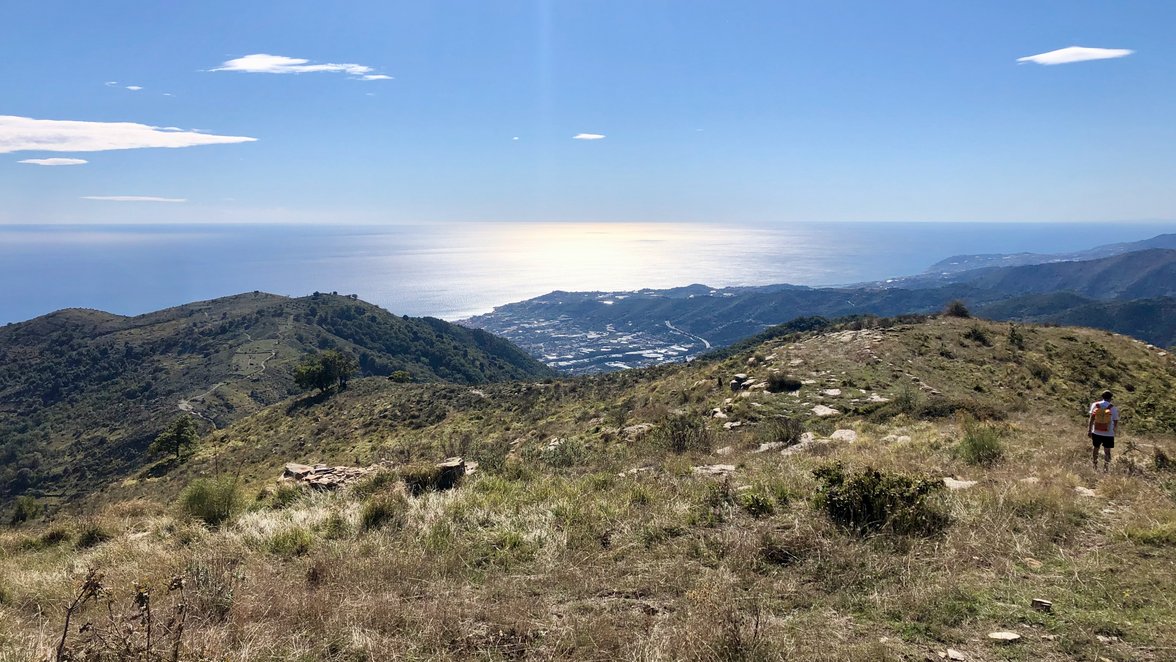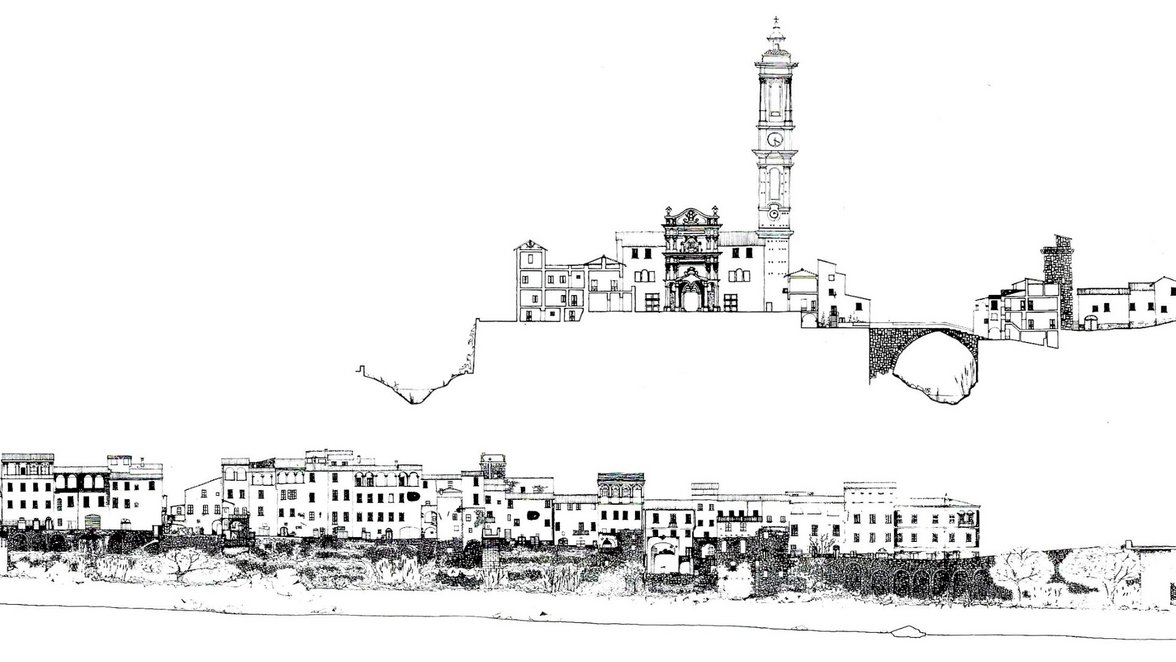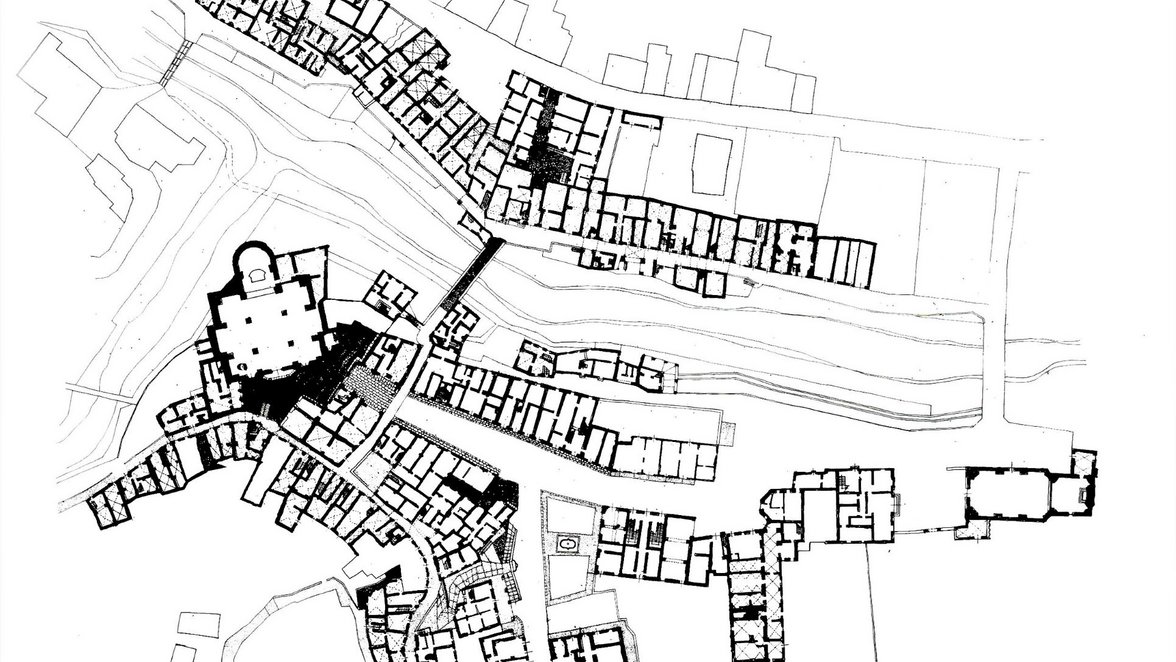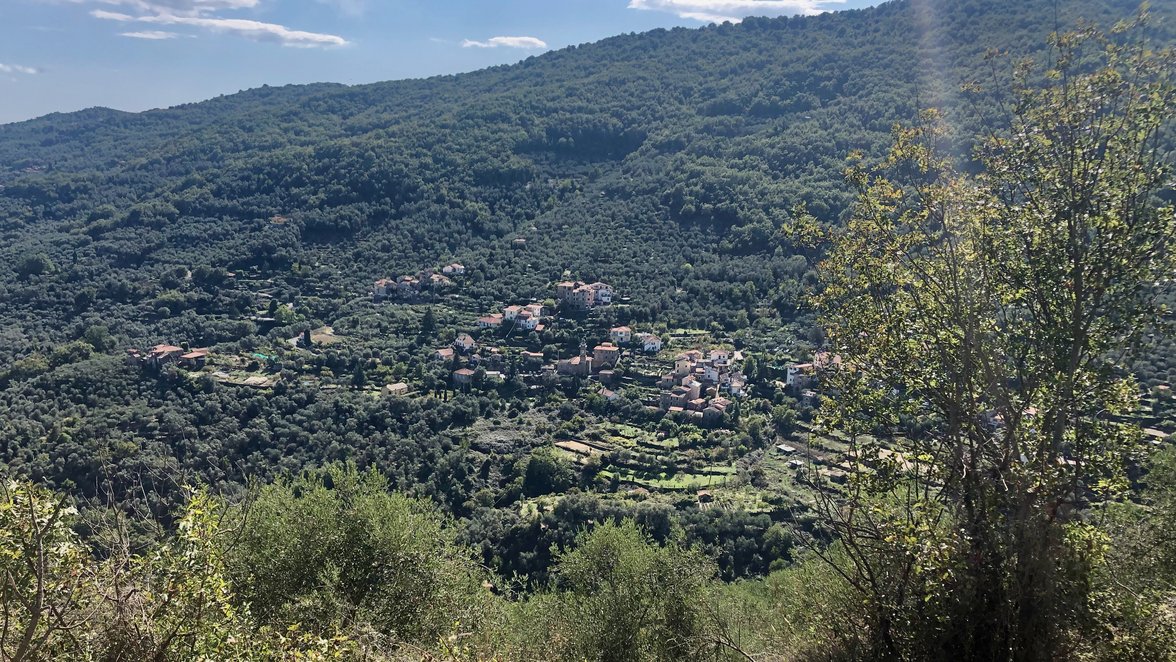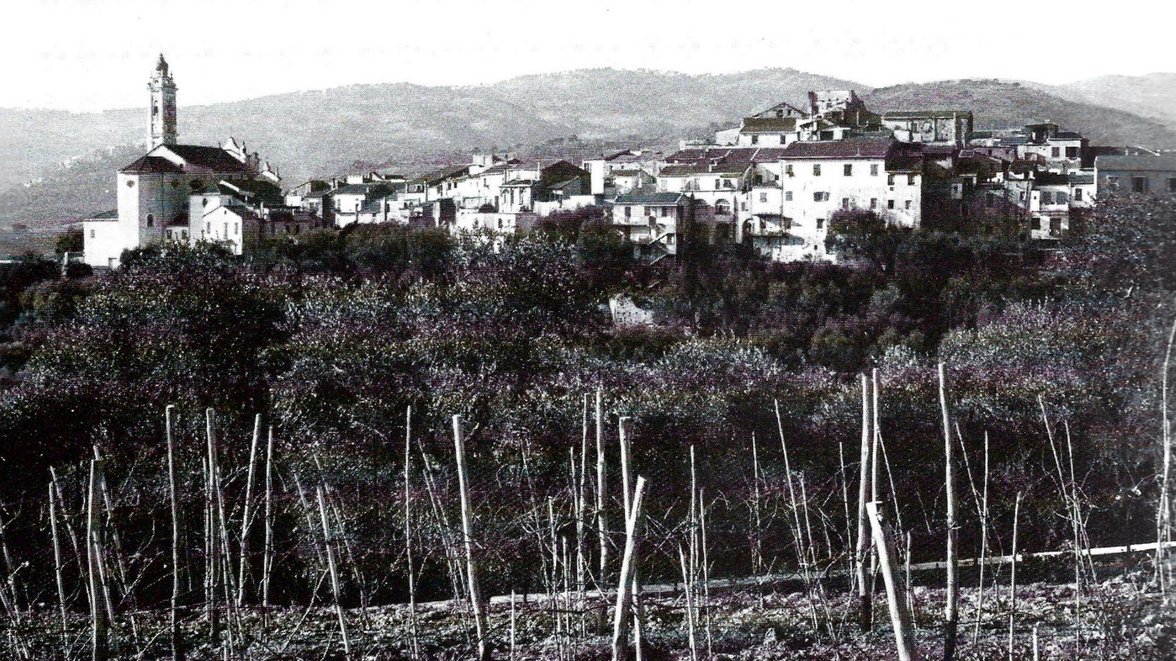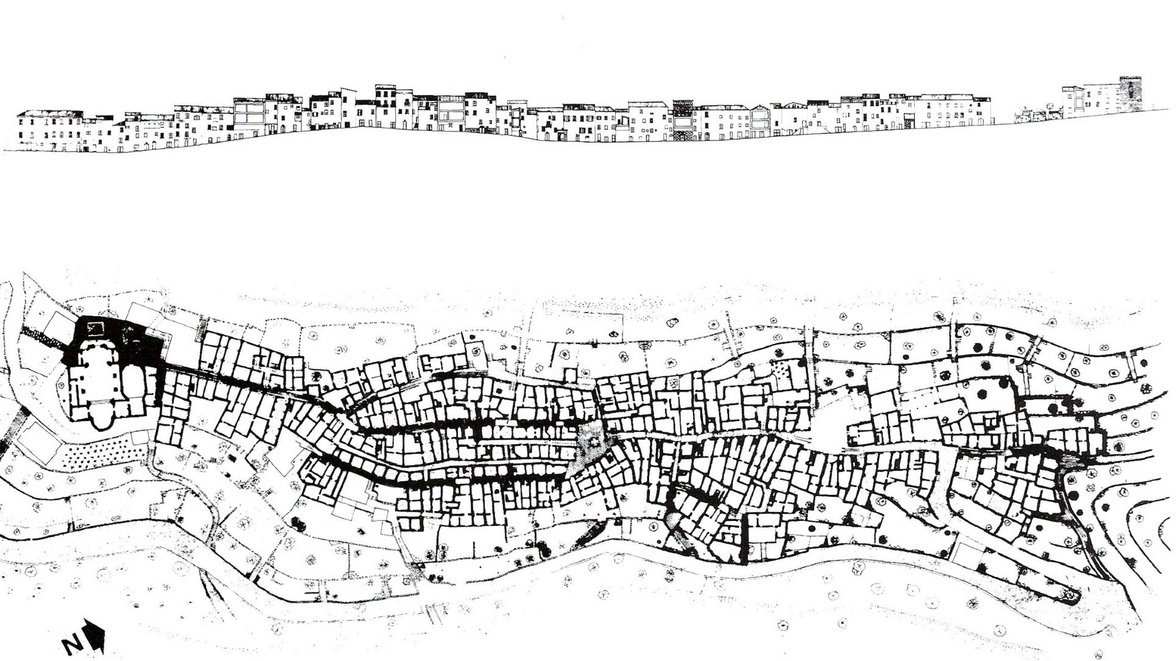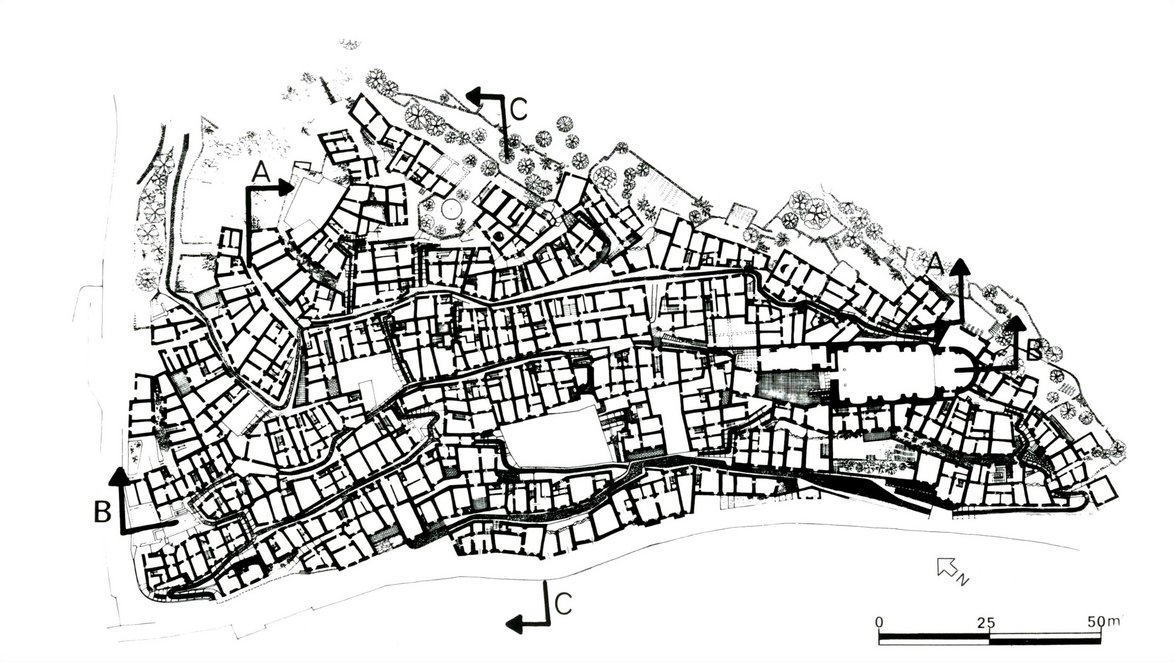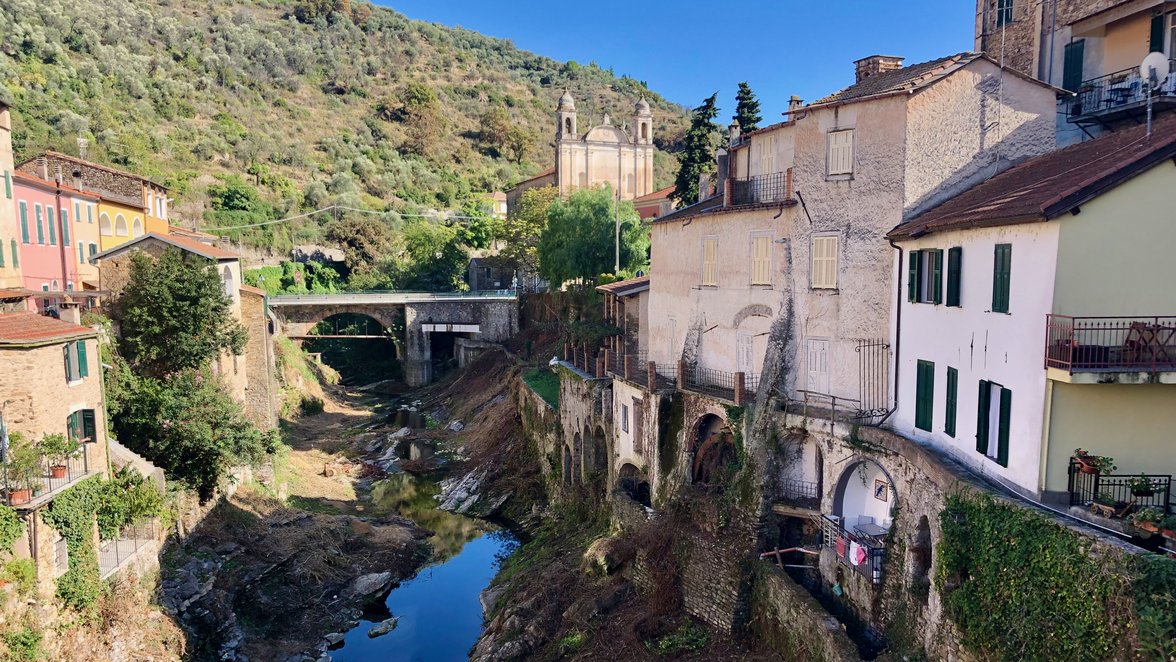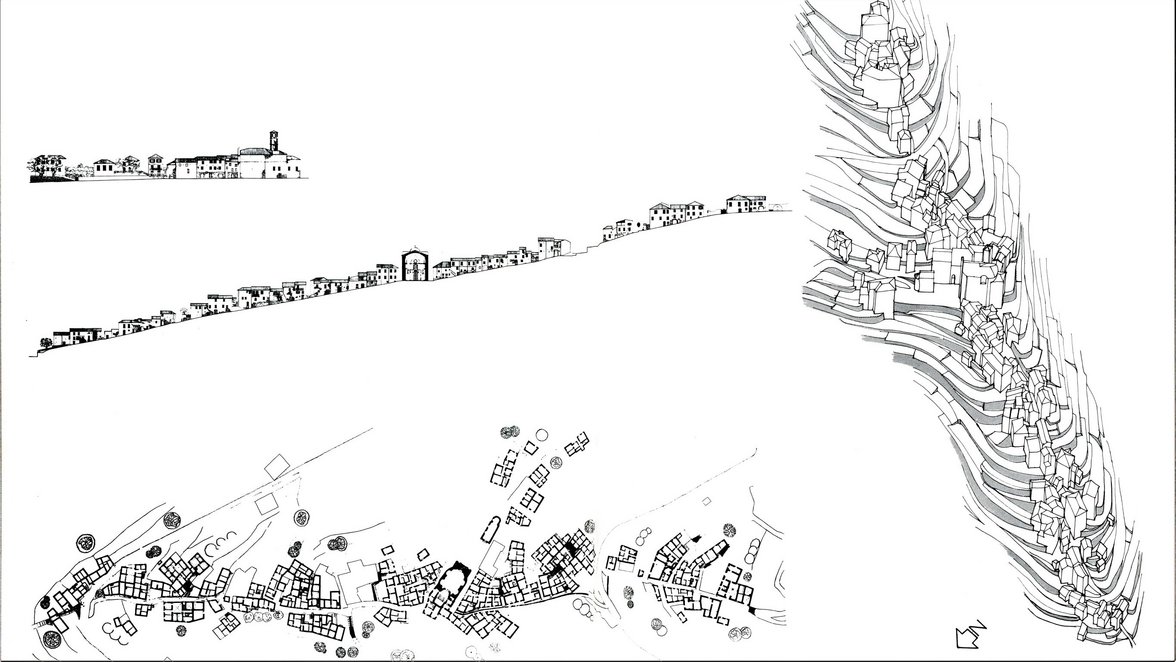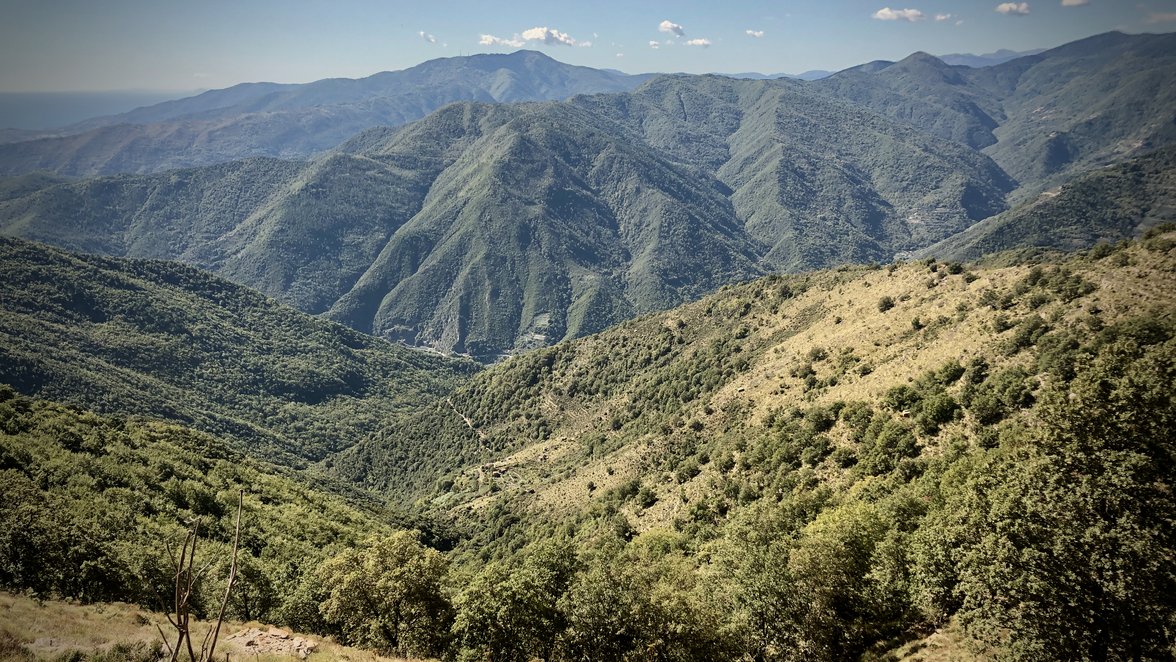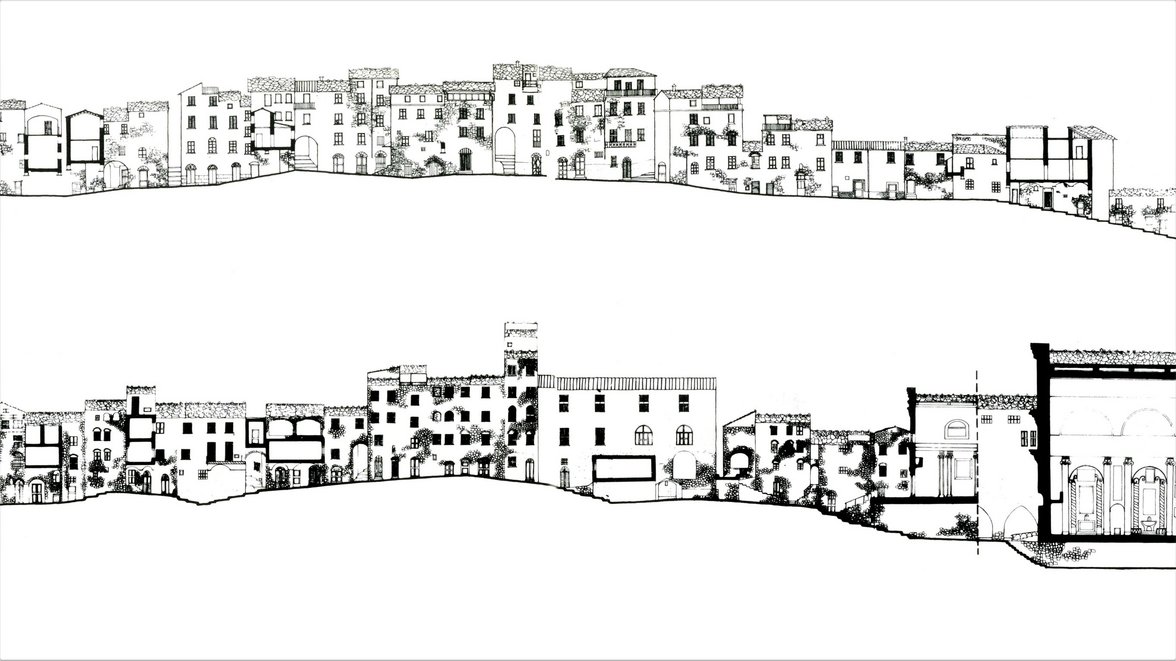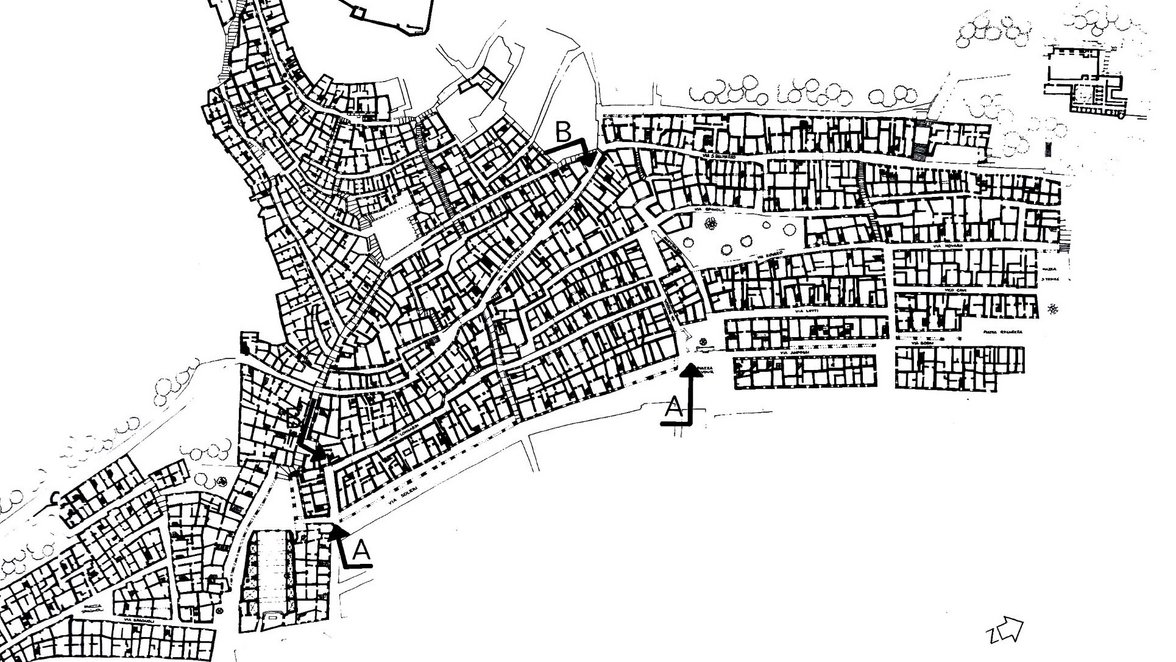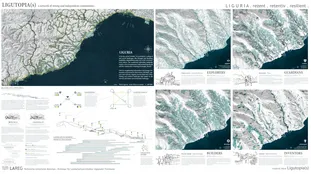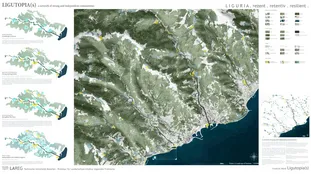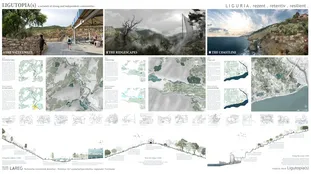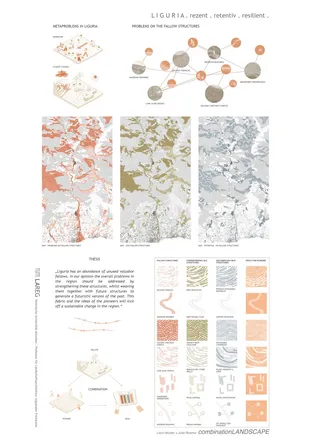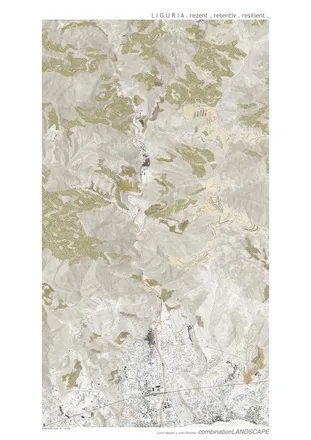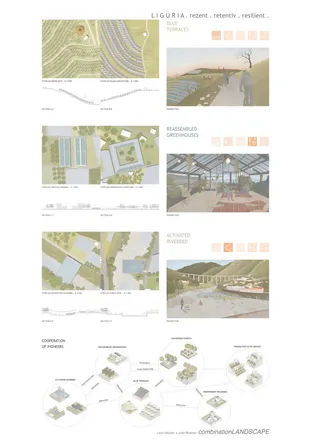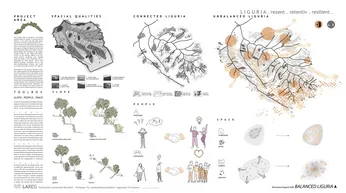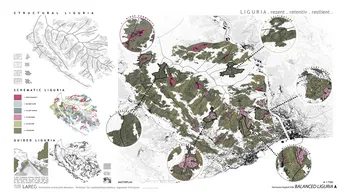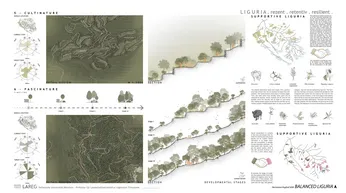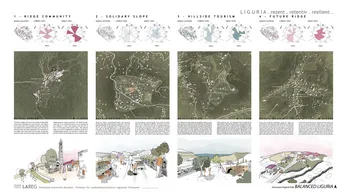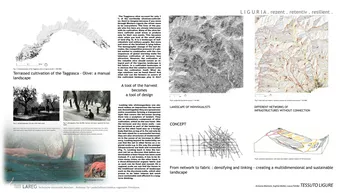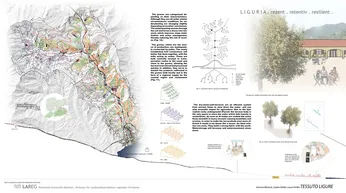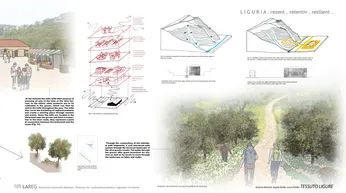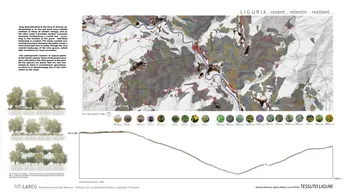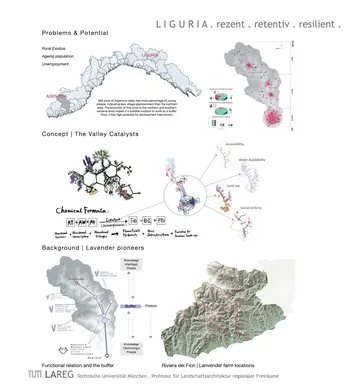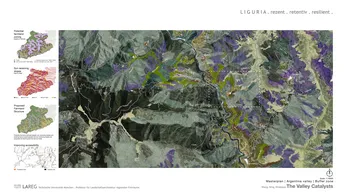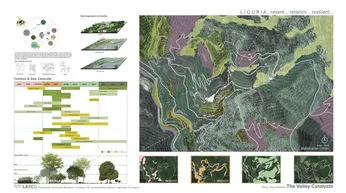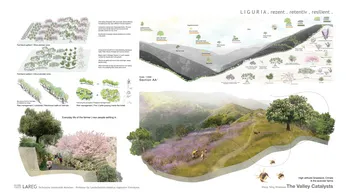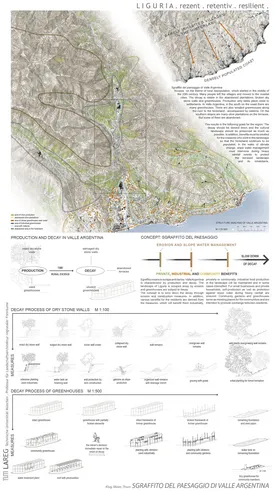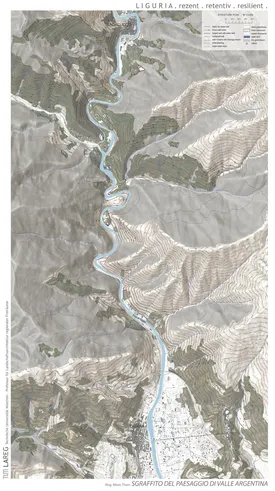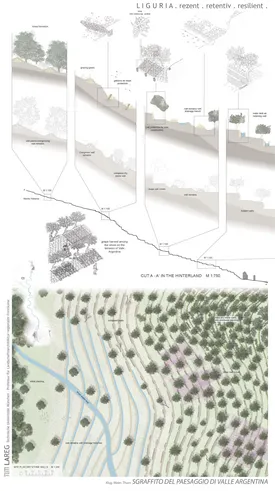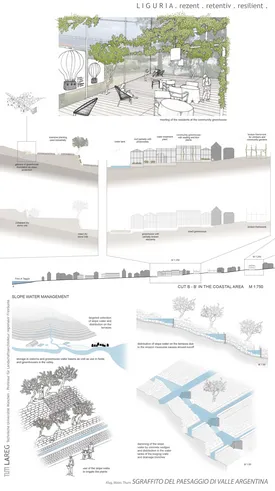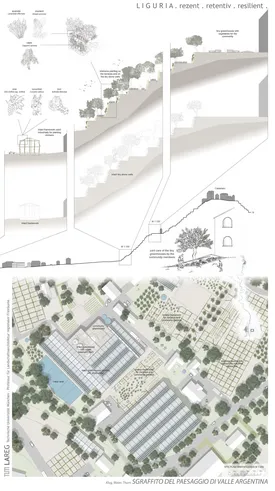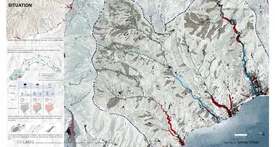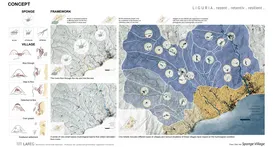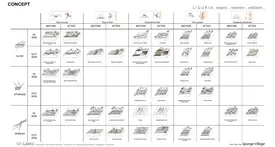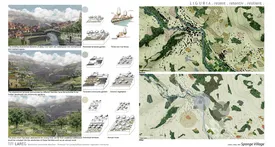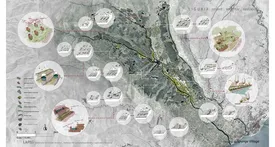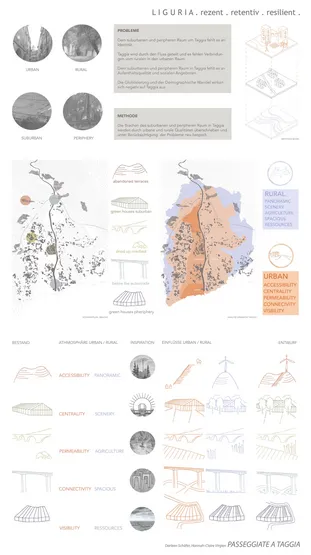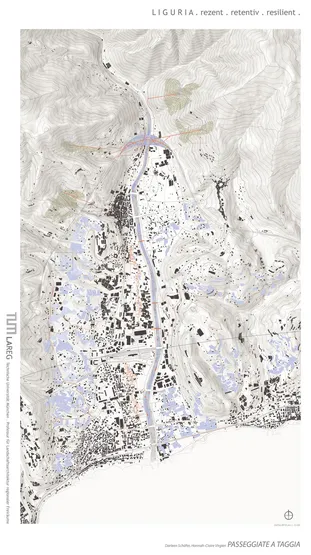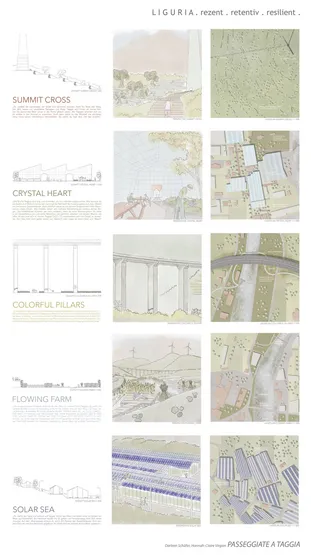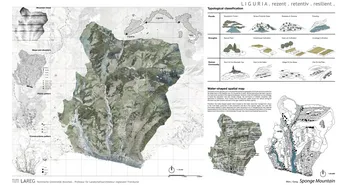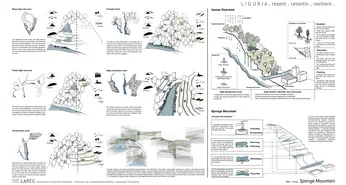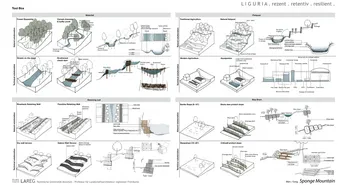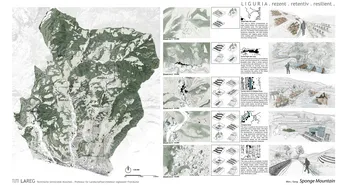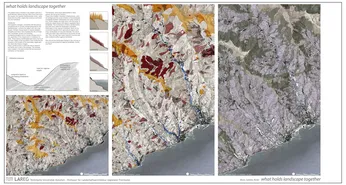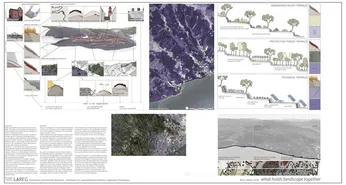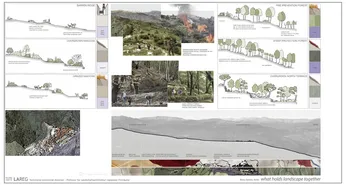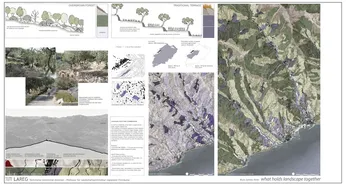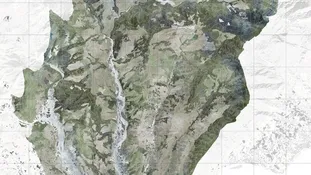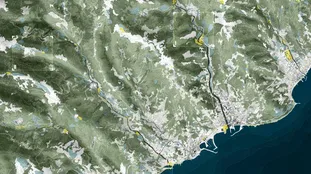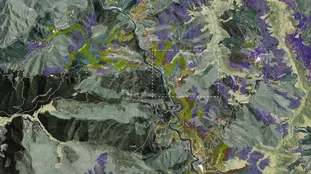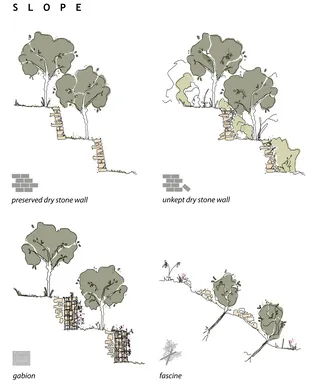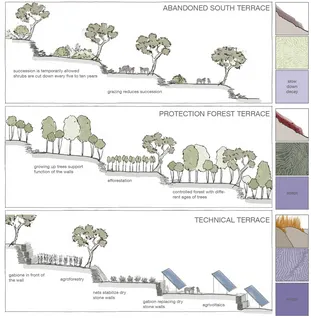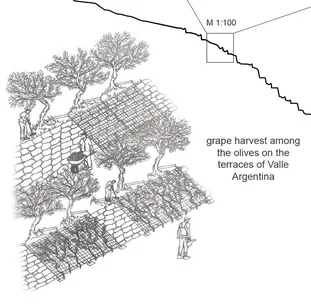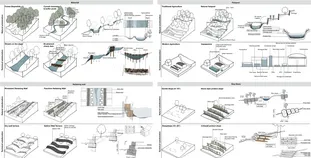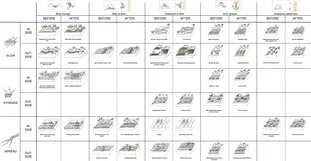the west of Liguria
In western Liguria, between Genoa and the Côte d'Azur, agglomerations grow along the Mediterranean coast and into the valleys, while at the same time more and more fallows appearing in the landscape of the mountains. Where once a system of canals draining water from the Alps into the sea and simultaneously served to irrigate the vineyards and olive slopes, its loss today leads to erosion and water shortages. The isolated villages are losing their inhabitants, and the cost of maintaining infrastructure in deserted areas is becoming inefficient. Demographic change, combined with climate change, are new challenges for the region. The polarity of water shortage and water disaster leads to issues that need to be addressed at different scales.
While the coast benefits primarily from tourism and is well developed with infrastructure, the historic villages on the mountain ridges are losing their livelihoods.
recent . retentive . resilient .
In the winter semester 22/23 we were looking for answers how landscape-concepts and designs can be used to preserve, develop and renew the Ligurian landscape in times of climate change. In the classical triad of the term 'Aufhebung', the structures and elements of the historical cultural landscape (especially the dry stone walls of olive cultivation) were to be developed in the landscape in the sense that they are preserved (resilient - resistant), can take on new functions (retentive - receptive) and are renewed (recent - fresh).
During the project the individual design groups were free to choose their design areas and scales for conception and design. Solutions could be sought on a regional, local, urban planning or object planning level. 10 design groups - 5 of which were bachelor and 5 master groups - took on these challenges. Our project was always accompanied by its initiator Annette Dehlinger (B.Sc. Landscape Architecture), who lives in the Imperia region and by Adriana Ghersi, professor of landscape architecture at the University of Genoa and specialist for historical cultural landscape elements in Liguria.
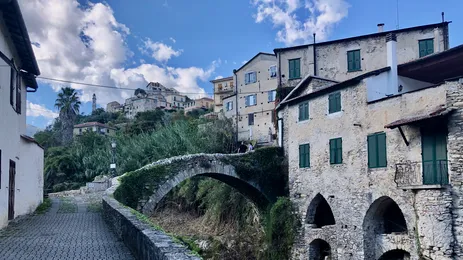
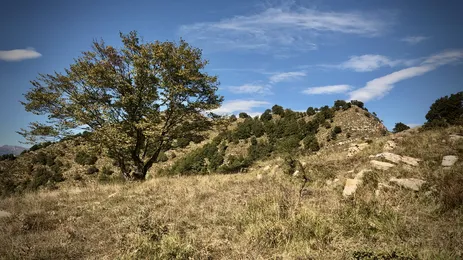
landscape conditions for pioneers
During the excursion we got to know through Annette Dehlinger local actors and pionieers who fight to preserve the cultural landscape of Liguria. Some design groups took this as an opportunity to explore the theme of pioneers. They developed spatial strategies and principles on how to 'open up' the Ligurian mountains to pioneers and, through the action of pioneers, to preserve the cultural landscape from decay and the natural hazards that accompany it - and eventually to reactivate areas that had fallen into disuse. By implementing new elements, for example for the production of energy or food, pioneers create the foundation for a sustainable, resilient region (cf. projects: Ligutopia(s), combinationLANDSCAPE).
regional products change the landscape
The further development of communities, the development of new networks and associations for the production and marketing of special regional products were also basis of some conceptual approaches. On the foundation of the historical cultural landscape, recent, old and new economic methods as well as agricultural products were combined: Lavender and herbs in interaction with honey production (Valley Catalysts) or the reactivation of decentralized olive oil production (Tessuto Ligure). In another work, the focus was mainly on the potential of the responsibility that inhabitants of different types of settlements can assume from their location for the preservation of the cultural landscape (Balanced Liguria).
Liguria as sponge landscape
In contrast to the social structures, other design groups focused on the spatial structures and landscape types and looked for technical possibilities that could, on the one hand, preserve and further develop the cultural landscape in its basic features and, on the other hand, protect against natural disasters caused by climate change. In addition to forest fires and landslides, they focused on the water balance and considered how land use and settlements can deal with drought and floods (retention) (Sgraffito desl Paesaggio di Valle Argentina, Sponge Village, Passeggiate a Taggia, Sponge Mountain). As a regional concept, the work 'what holds landscape together' developed a way to respond in a resilient and flexible way in the tension between migration and immigration, natural disasters and their defense, fallow landscape and its production.
regional concept approaches
All the design groups moved on the large-scale (geographically small) and sought regional to urban solutions. The problems of the Ligurian landscape do not arise from local phenomena, but from global problems such as climate change and issues of national scope such as demographic change and rural exodus. Such complex issues ('wicked problems') can only be addressed through cooperation and collaboration at the regional level.
saving the slopes
The implementation of the solutions also depends on the commitment of the people on site - and on being able to inspire new people to be active in the landscape, who for this purpose move their center of life to the areas affected by migration. To this end, the design groups also addressed the very practical issues of slope stabilization - as protection against natural disasters such as erosion, landslides, and ultimately the loss of fertile soil accumulated since ancient times through terracing. In addition to concepts of how to distribute and facilitate the work on the dry stone walls, younger techniques using gabion walls and fascines are under discussion for this purpose, as well as the controlled succession of limited areas.
The multiple conceptual approaches at the regional and urban planning level must be brought to life in the cultural landscape itself, in order to preserve and maintain a recent, retentive and resilient Ligurian cultural landscape - to lift - but also to be able to develop it further with new ideas.
The multiple conceptual approaches at the regional and urban planning level must be brought to life in the cultural landscape itself, in order to preserve and maintain a recent, retentive and resilient Ligurian cultural landscape - to lift - but also to be able to develop it further with new ideas.
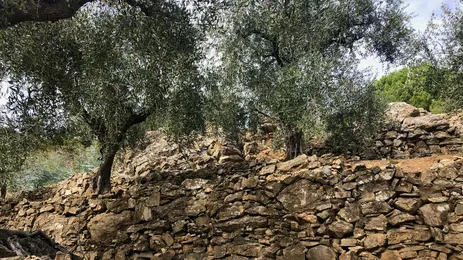

theoretical background
In the project platform we have worked with...
... the palimpsest and permanent structures (ROSSI, CORBOZ)
... villages, agriculture and dry stone walls (GHERSI, KONOLD, AMORETTI)
... sponge landscape in climate change (YU, MC HARG)
... the morphological approach and the landscape contract (SCHÖBEL)
... demographic change, micro-economies, tourism and rural social structures.
